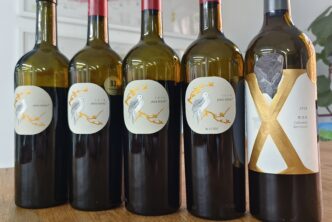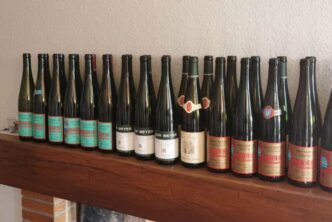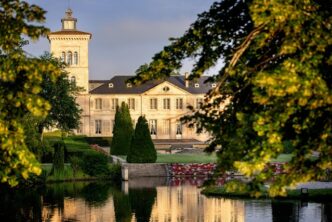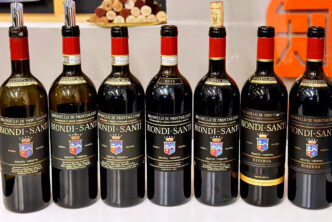Les Crêtes is not just one of Italy’s most important wineries, but also the one that first put the Valle d’Aosta on the world wine map attracting the attention of wine lovers and collectors everywhere. It is the brainchild of one of Italy’s greatest wine men of all time, Costantino Charrère, illuminated, insightful and passionate like few men and women of wine I have met in my lifetime devoted to wine (and believe me, I have met a few and I do mean all over the world). It is thanks to Charrère if today we can talk about the wines made with grapes such as Prëmetta, or have a clearer understanding of the potential of Fumin. By paying attention to and working closely with the Institut Agricole Régional (IAR), Valle d’Aosta’s teaching and research academic agricultural institution, he was able to turn long forgotten grapes into wines that sybarites everywhere can enjoy today. I am a good example of this: the first time I ever heard of Prëmetta, for example, was by talking with Veronelli, an older Italian wine writer who lived in Bergamo (besides Toronto where I was born, that’s my “native city” as I grew up there), who was the one to tell me about Charrère’s wine made with that grape. That was plenty enough for me to not just go looking for the wine in the wine shops of Rome when I got back there after weekend trips (I was attending university in Rome at the time) but to also go jump in my car and pay the man a visit. A revelatory experience that I have never forgotten. To be clear, if I have become the native wine grapes expert I am today, a lot of the merit must also go to Costantino, whose example, passion, knowledge, and insight have guided me relentlessly throughout all my years in wine.
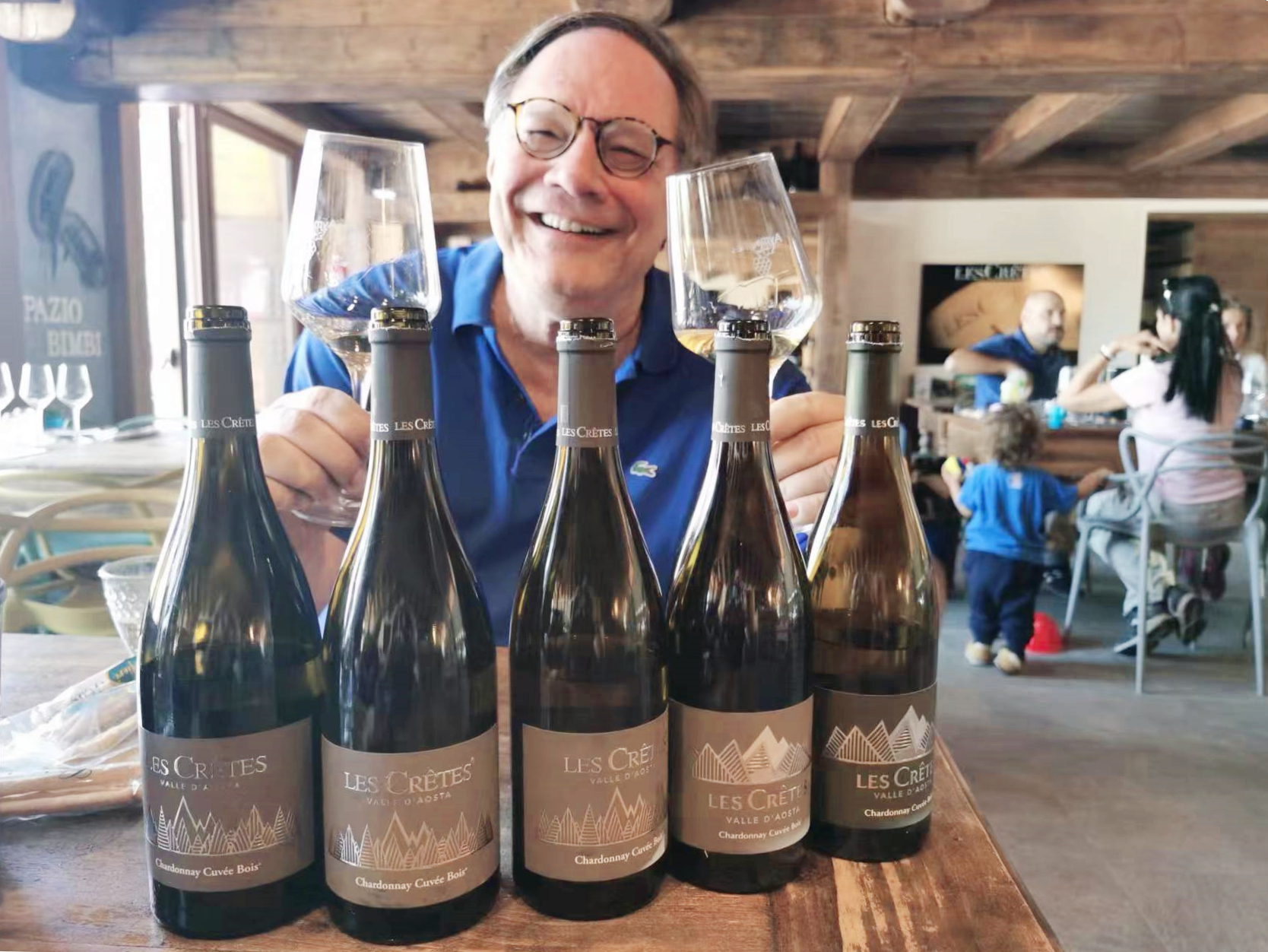
The winery and wines did not exist as such at the beginning of the Charrère family history. The Charrère family traces its roots in the Valle d’Aosta and Aymavilles in particular (the hamlet where the Charrères have always lived) since 1750, when Bernardin Charrère moved there from Haute Savoie (in today’s France). There his descendants Etienne, Louis and Antoine (the father of Costantino) all dabbled in grain farming and making of different food products such as apple cider (Valle d’Aosta has some of Italy’s best apples) and nut oil (a classic specialty of the Valle). It was only in 1955, when working in grains and oils was becoming less remunerative because of the arrival in the region of cheaper what products and olive oil, that the family turned its attention to grape growing and fine wine production.
Initially, Charrère bottled wines under his own name: the winery, located in the pretty Valle d’Aosta hamlet of Aymavilles, was initially called Costantino Charrère and the bottles were characterized by a white label and a Gothic type-looking script. Later, in, he founded the Les Crtes estate, and that is when he and his winery went from Italian high-quality wine curiosity to wine stardom. The estate was long run by Costantino and his wife Imelda, but today it is the new generation that has taken over and that you’ll meet at the beautiful accommodating winery, the sibling duo of Elena and Eleonora. The two girls got an early start at the winery and into the understanding of eco-friendly winemaking, when, still young, they were sent regularly into the fields of Ozen to catch ladybugs, and then carefully release them back home in the vineyards so as to allow these natural pest-controllers to do their thing among the vines. That story, which is true, tells you a lot right there about the kind of people the Charrère family is made up of. That insight on a natural approach to winemaking was but one of the many innovations that Costantino brought to the fore: as already mentioned, he was the first to place his attention on and make wine from old forgotten varieties, but he was also the first in the area to routinely place specific cru names on his labels and to bottle single-vineyard wines. You know, if some people have success in life it’s not always all because of blind luck.
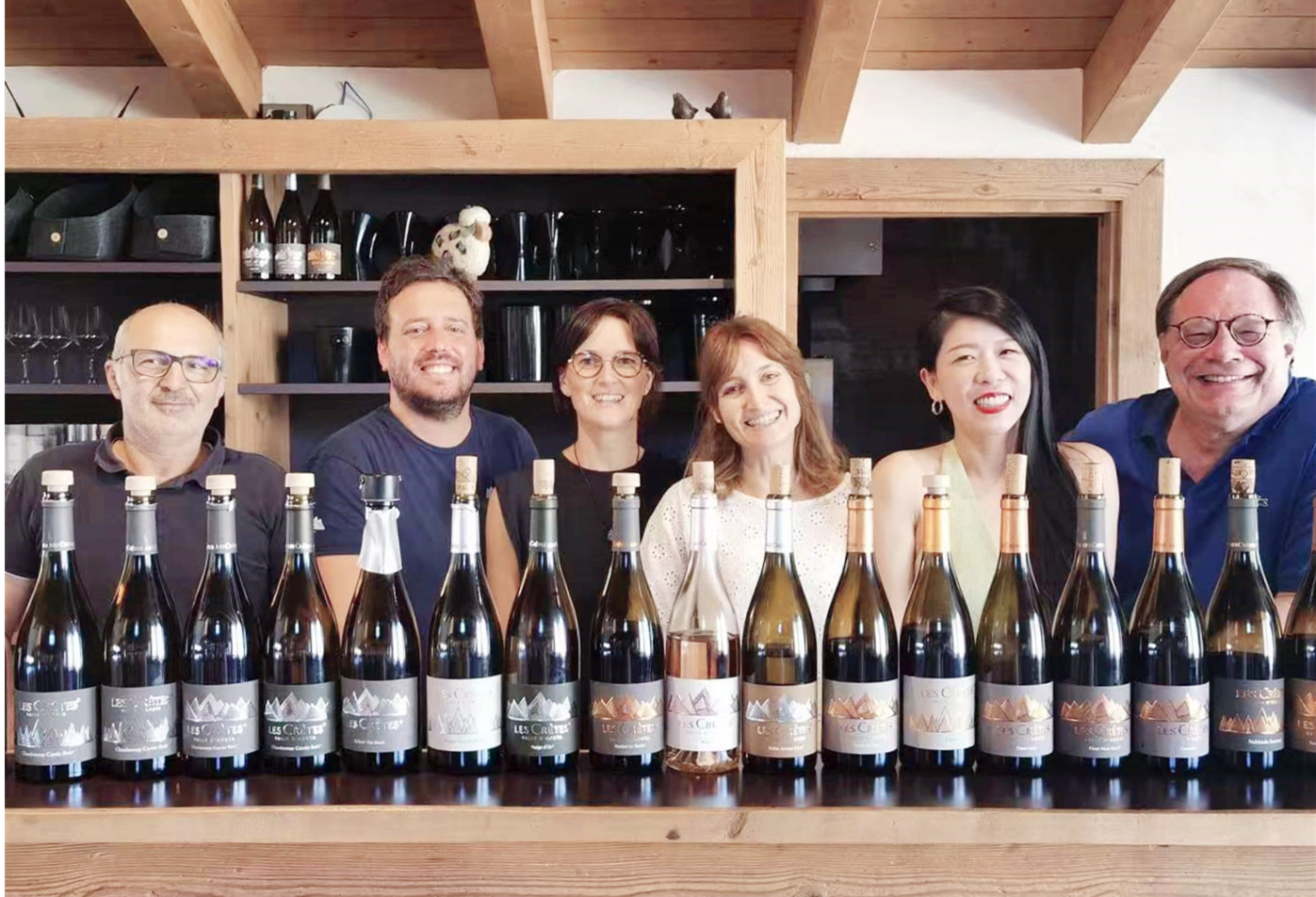
Today the estate makes about 250,000 bottles a year from 35 hectares located the territories of six different Valle d’Aosta communes, with a focus on both international and native grape varieties.
The terroir and the wine
First made in 1994, the Cuvée Bois was born out of the friendship between Costantino and the Count Gagnard de la Grange, a noble vine grower of Puligny Montrachet. In sharing the secrets of the “gobelet” pruning with the count, which is practiced in Valle d’Aosta, a friendship was born that led to the élevage of this wine. To be crystal-clear, the Cuvée Bois is one of Italy’s four or five best Chardonnay wines, one fo the very few that can stand up to international scrutiny. Simply put, there are just too many very fine Chardonnay wines made all over the world nowadays for the mostly insipid, neutral and/or frankly over-oaked Italian Chardonnay wines of Italy to hold any interest whatsoever for anyone with even just a modicum of tasting experience. And that includes all the more or less “famous” names you might think of in Tuscany, Alto Adige and Fruli Venezia Giulia. By contrast, the Cuvée Bois has been a star right from tis first vintage, and nothing ahs changed since that first iconic bottling: the wine still shines a very bright path.
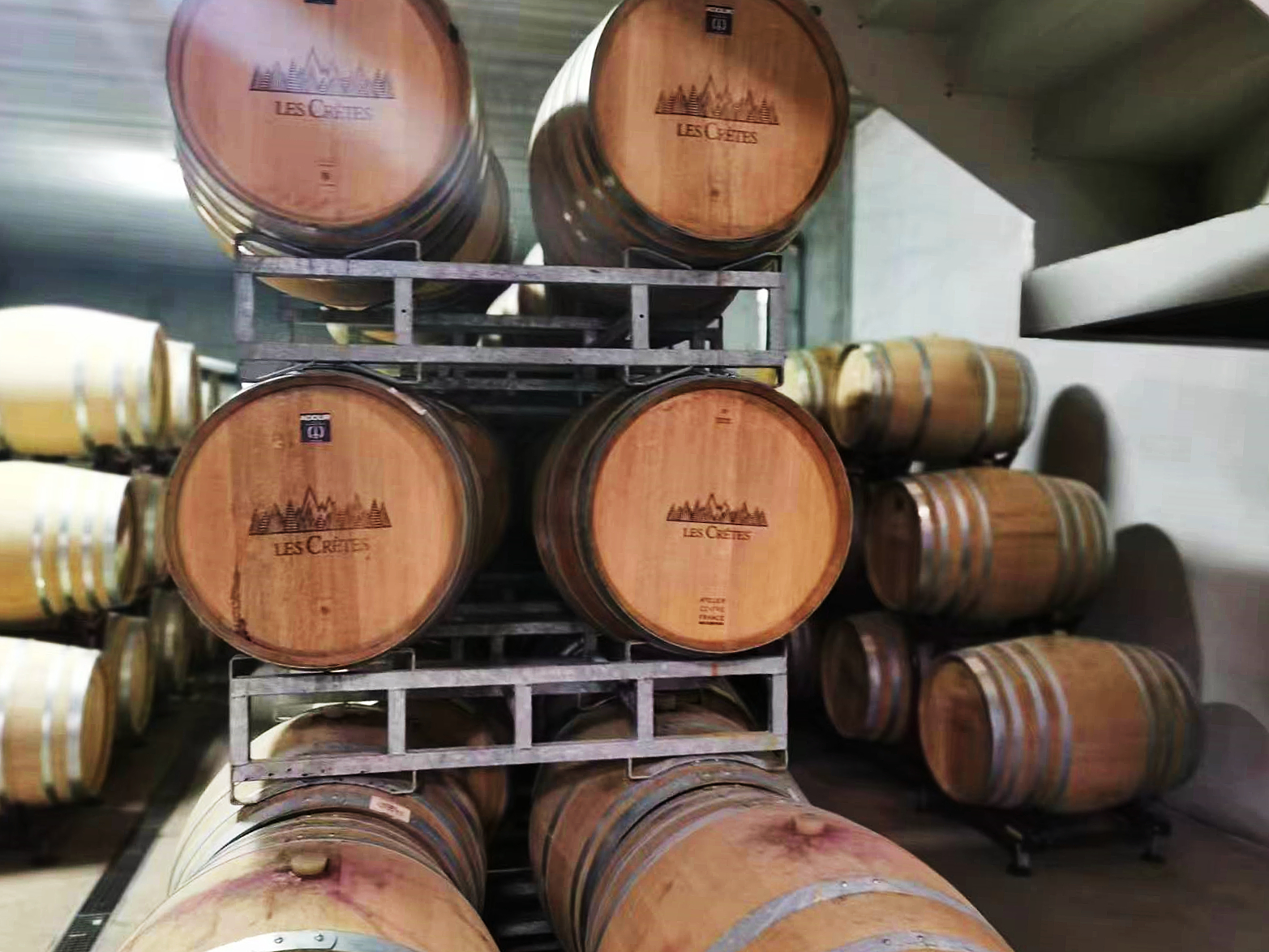
The grapes for the Cuvée Bois are picked in seven crus in St.Nicolas, Coteau, Pompiod, Champorette (the old vineyard of Petite Arvine was replanted in 2016), St.Christophe both High and Low (du Haut et du Bas, to use French parlance), and Vigna (which is at at the foot of the Côteau la Tour, the hill famous as the source of Les Crtes’s Syrah and Fumin grapes ). The oldest vineyard dates to 1979 at St.Christophe (both sections), but Coteau is old too (1989), and St. Nicolas and Pompiod both have many parcels of vines all about 20 years of age.
Vinification of the grapes for the wine is straightforward. The grapes spend one night in fridge, then are lightly pressed; only the first pressing is used to make this wine. Stainless steel-fermented, then moved to tonneaux and stays there for almost twelve months on the lees with plenty of batonnage (lees-stirring).
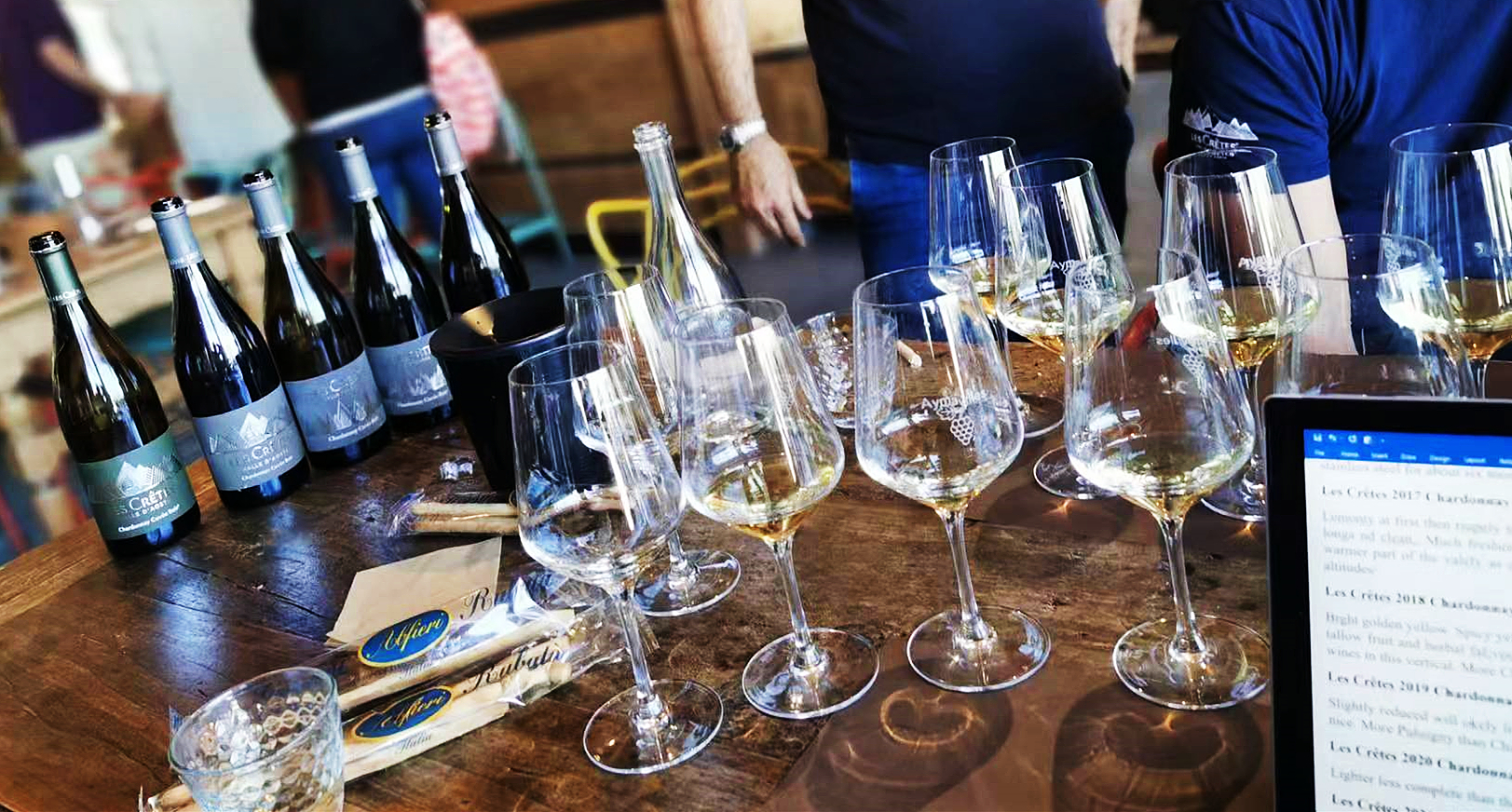
A possible future development
The winery’s belief in their Chardonnay wines and its continuous search for improvement has led Les Crêtes to work on a new project over the last decade or so. From 2018, the winery has begun a single-vineyard bottling study: the goal is to release one wine from a specific cru each year (clearly, the one that performed best in that vintage) but they still haven’t decided if and when they will begin to do so. Understandably, as they only make from 16,000-20,000 bottles a year of what is the winery’s flagship wine, there exists the fear that subtracting grapes of one cru that would normally go into the Cuvée Bois may damage the latter wine. That concern is certainly understandable, given that the Cuvée Bois is one of Italy’s three or four best Chardonnay wines.
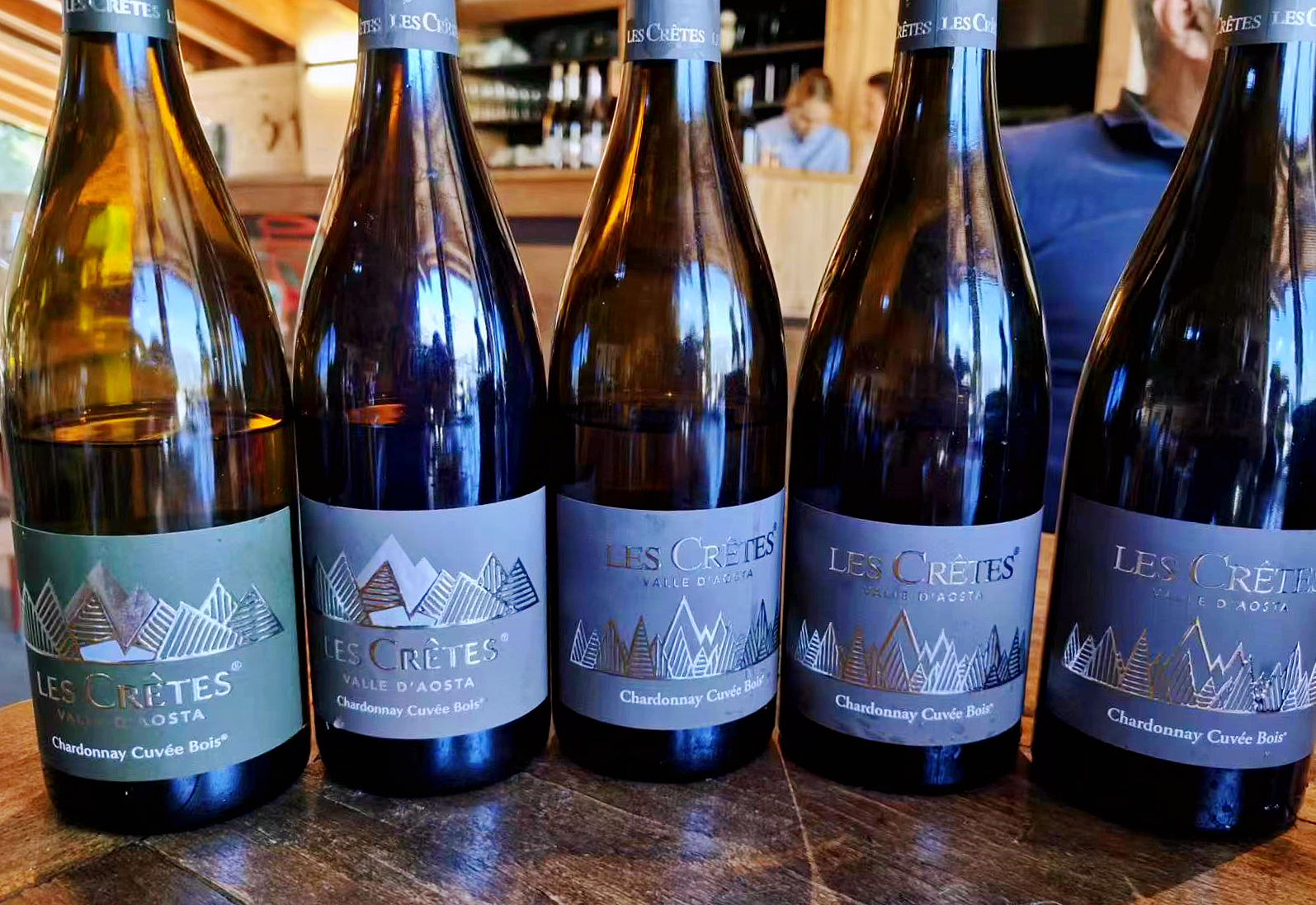
The wines in this tasting report
All the wines in this report were tasted directly at the winery this past August when I visited Les Crtes, or directly in Rome where opened the older vintages bought upon release to make the vertical more complete. As is always the case with me and the TerroirSense Wine Review, all travel, lodging and other expenses relative to the trip to the area and winery was paid out of pocket, with no sponsorships of any kind accepted.
Les Crêtes 2010 Chardonnay Cuvée Bois 93
Deep golden yellow colour. Vanilla, custard and honeyed nuances complement ripe pear and pineapple. Then more floral and herbal in the mouth with canned pineapple notes emerging on the long suave finish. Drink up. Drinking window: 2023-2025.
Les Crêtes 2015 Chardonnay Cuvée Bois 90
Lively straw-gold colour. Herbs and cloves dominate the orchard fruit aromas and flavours. Slightly aggressive at first, then mellows out with simpler broad nuances of canned peach and caramel on the long aftertaste. Drink up. Drinking window: 2023-2024.
Les Crêtes 2016 Chardonnay Cuvée Bois 94
This is superb. Pale golden yellow colour. Elegant aromas and flavours of lemon peel, baked bread, candied lime and minerals. Laser-like lift but plenty of suave juicy fruit leave a rich, glyceral mouthfeel behind. At once complex yet drinkable, and currently showcasing compelling balance and sweetness of fruit. Drinking window: 2023-2027.
Les Crêtes 2017 Chardonnay Cuvée Bois 92
Bright golden straw colour. Lemony at first then ripely tropical on the enticing nose. Round and luscious in the mouth but not over the top, neither caramelly or too ripe. Finishes spicy, long and clean. Interestingly, this Chardonnay wine is much fresher than the Les Crêtes 2017 Petite Arvine Fleur, which is made from lower-lying vineyards in a warmer part of the valley as opposed to the Chardonnay which is made from many different plots at cooler altitudes. Drinking window: 2023-2027.
Les Crêtes 2018 Chardonnay Cuvée Bois 90
Bright golden yellow. Inviting aromas of spicy yellow orchard fruit, peach tea and guava. The tough, with an earthy nuance to the spicy yellow fruit and herbal flavours. Closes long, juicy and nicely tactile, broader and larger than most of the other wines in this vertical. More Chassagne than Puligny, you might say. Drinking window: 2024-2028.
Les Crêtes 2019 Chardonnay Cuvée Bois 94
Medium straw yellow. Slightly reduced at first, with very pretty aromas of white grapefruit, banana, apple and pear. Then similar flavours that are very precise and focused. This will likely live long thanks to vibrant acidity making this taste still very young. The spicy mineral and clean finishes lingers long and fresh. This is really nice, and unlike the 2018 Les Crêtes Chardonnay Cuvée Bois, this is more Puligny than Chassagne. Each will have its fans. Drinking window: 2024-2030.
Les Crêtes 2020 Chardonnay Cuvée Bois 93
Luminous straw colour with golden tinges. Aromas and flavours of spiced pear, minerals and lemon ice. Smooth and precise, with a nicely energetic mouthfeel, but strikes me as being lighter in style than some Les Crêtes Chardonnay Cuvée Bois wines I have had over the years at a similar stage of development, but delicious and approachable, this is a very nice Chardonnay wine. Give it a few years in the cellar to help it develop further complexity. Drinking window: 2025-2032.
Les Crêtes 2021 Chardonnay Cuvée Bois 94
Vivid straw yellow. Intense aromas and flavours of pit fruit, guava, pineapple, minerals and white flowers. Very concentrated, pure and penetrating, this is another marvelous Chardonnay wine from Les Crêtes. It’s one of the more powerful yet fruity Cuvée Bois made by the winery over the last few years. Very well done. Drinking window: 2023-2027.


 中文
中文
